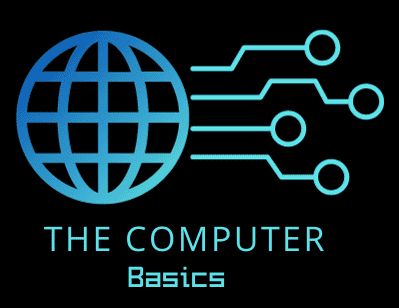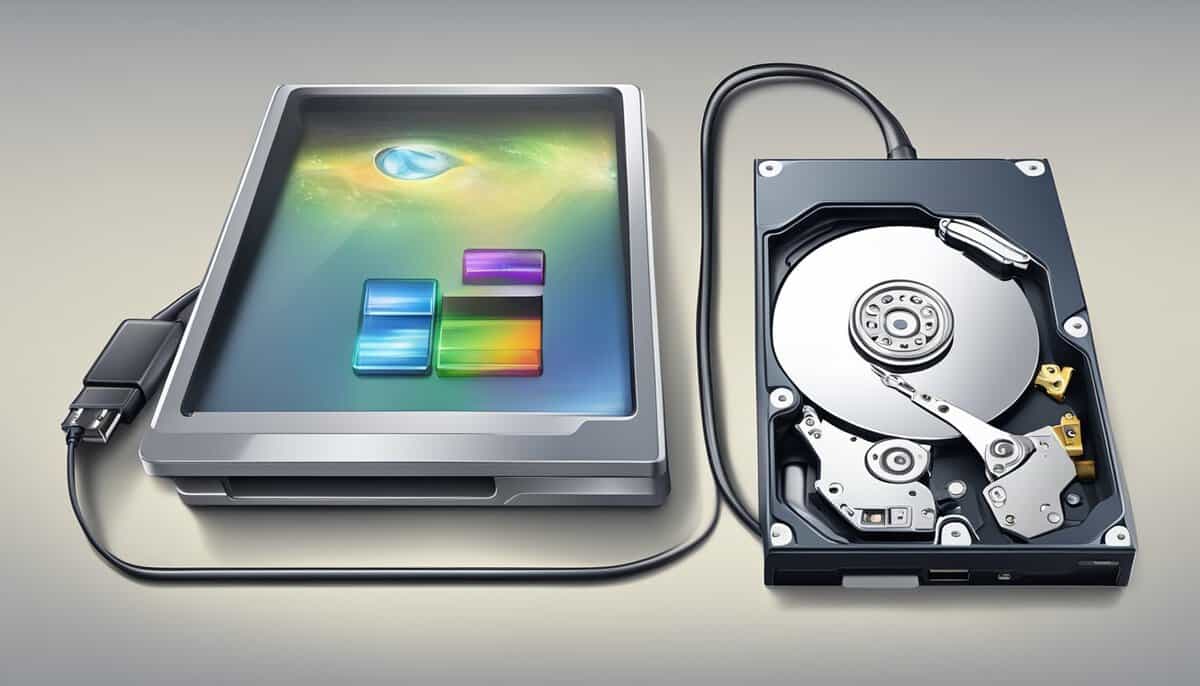External hard drives play a crucial role in digital content management. By providing extra storage and backup options, they help ensure your files are safe and accessible. Whether you’re a creative professional who edits videos or a gamer with a massive collection, having reliable storage is essential.
Choosing the right external hard drive for your needs means looking at factors like storage capacity, speed, and portability.
When picking an external hard drive, it’s vital to consider how much space you need. Some drives offer massive capacities perfect for video editing, while others are smaller and more portable. They also provide superior speed, which can make a huge difference when transferring large files.
Security is another benefit of external hard drives. They allow you to keep a backup of important files, protecting you from data loss due to hardware failure or accidental deletion. Additionally, many external hard drives come with features like encryption to safeguard your data from unauthorized access.
Key Takeaways
- External hard drives are key for backup and storage.
- Choose a drive based on storage capacity, speed, and portability.
- External hard drives enhance security by offering backup options.
Understanding External Hard Drives
External hard drives are key tools for managing your digital content. They offer a great way to store, back up, and transfer large amounts of data quickly and efficiently.
Hard Drive Basics: HDDs vs SSDs
When it comes to external hard drives, you have two main types: HDDs (Hard Disk Drives) and SSDs (Solid State Drives).
HDDs are the traditional type and are generally cheaper. They come in larger capacities, making them great if you need a lot of space. However, they have moving parts, which makes them slower and more prone to damage.
SSDs, on the other hand, are newer and faster. They don’t have moving parts, which makes them more durable and quicker when reading or writing data. They are usually more expensive and come in smaller capacities compared to HDDs.
Evaluating Storage Capacity
Choosing the right storage capacity depends on your needs.
If you have a lot of files, like videos, photos, and games, you might want an external hard drive with a few terabytes (TB) of space. A terabyte is 1,024 gigabytes (GB), which is also 1,024 megabytes (MB).
Think about how much space you currently use and add some extra for future needs. For general use, a 1TB or 2TB drive might be enough. But if you’re storing HD movies or large software, you might need 4TB or more.
Interface Options: USB, FireWire, Thunderbolt, and eSATA
External hard drives come with several interface options for connecting to your computer. The most common is USB.
USB is popular due to its wide availability and ease of use.
FireWire was faster than old USB versions but is now mostly outdated.
Thunderbolt offers rapid transfer speeds ideal for large data tasks.
eSATA is less common but provides a straightforward way to connect external drives using internal SATA technology.
Choosing the right interface depends on what ports your computer has and how quickly you need to transfer data. USB 3.0 or Thunderbolt are usually good choices for speed and compatibility.
The Significance of Backups
Backing up your data is crucial to protect against data loss, whether due to user error, hardware failure, or other unexpected events. Knowing why backups are necessary and how to choose the right methods ensures your important files remain safe and accessible.
The Necessity for Regular Data Backup
Data loss can be a nightmare. Losing important files from your server or personal device can halt productivity and lead to significant setbacks. Regular data backups are your safety net, ensuring you can always retrieve your data.
Data backup methods like external hard drives, NAS devices, and cloud storage help you protect against various risks. Having multiple backup solutions is a good practice, as it increases your chances of recovering lost data quickly.
User error is a common cause of data loss, but backing up regularly minimizes its impact. You can continue your work without worrying about lost files, knowing you have a recent copy saved elsewhere.
Choosing the Right Backup Software
Backup software simplifies the process of saving your data by automating it and ensuring consistent protection. Options range from basic software for personal use to more complex solutions for businesses.
When selecting backup software, consider factors like ease of use and compatibility with your devices. Some software offers advanced features like encryption and incremental backups. These features enhance security and efficiency.
Look for reviews and recommendations from trusted sources before making a decision. Backup software should fit your specific needs, whether you’re protecting a few documents or managing data for an entire organization.
Backup Options: Cloud Storage vs Physical Devices
Two main backup options are available: cloud storage and physical devices. Each has its advantages, depending on your needs and resources.
Cloud storage is convenient and accessible from anywhere with an internet connection. It automatically backs up your data and scales easily as your storage needs grow. Services like Google Drive and Dropbox often provide user-friendly interfaces and access to your data across multiple devices.
Physical devices include external hard drives, NAS systems, and tape drives. An external hard drive offers quick access to data and portability. NAS systems provide more storage and support RAID configurations for added redundancy. Tape drives are typically used in larger organizations for long-term storage.
Balancing these options can provide comprehensive protection. Combining cloud storage with physical devices ensures you’re covered in different scenarios, from local hardware failures to internet outages.
Boosting Performance and Storage

External hard drives are essential for increasing storage capacity and improving a device’s performance. They help store large files, improve system speed, and ensure your data is backed up effectively.
Expanding Your Device’s Storage
Using an external hard drive is a simple way to add more storage space to your computer or mobile device. Whether you have a desktop, laptop, or even a tablet, these drives can store everything from photos and videos to important documents and software.
If you’re constantly running out of space on your main device, a high-capacity external hard drive like the Western Digital My Book Duo 20TB can be a great option. These drives come in various sizes, so you can choose one that fits your needs and budget.
Some drives, like the WD My Passport Ultra, offer up to 5TB of space. This is more than enough for most users. You won’t have to worry about running out of space anytime soon.
Speed Considerations for Data Transfer
The speed at which data is transferred between your device and the external hard drive is critical. Faster data transfer means you spend less time waiting for files to move from one place to another. SSDs (Solid State Drives) are known for their rapid transfer speeds.
For instance, the Crucial X9 Pro SSD hits the sweet spot for speed, portability, and price. It’s ideal for photographers and anyone dealing with large files.
When choosing an external hard drive, check its transfer speed specifications to ensure it matches your needs. USB 3.0 and USB-C are common standards that offer high transfer rates. Always consider the compatibility of the drive with your current operating system to avoid any issues.
By focusing on these factors, you can make sure your external hard drive not only adds storage but also boosts your device’s performance.
Security and Protection

Keeping your data safe on external hard drives involves several strategies. It’s crucial to protect against data loss, theft, and unauthorized access through encryption and other security measures.
Safeguarding Against Data Loss and Theft
Data loss can happen due to hardware failure, accidental deletion, malware, or even natural disasters. External hard drives need to be durable and possibly shockproof. Drives like the Samsung Portable SSD T7 Shield offer rugged exteriors that protect against drops, dust, and rain.
You can also use multiple backups. Keep one drive at home, another at work, and maybe even one off-site. This way, if one is lost or compromised, your data isn’t gone for good.
Encryption and Data Security Measures
Encrypting your external hard drive is important for safeguarding your data from hackers and unauthorized access. Look for drives that come with built-in encryption features. The T7 Shield, for example, has AES hardware-based encryption for added protection.
You can also use software solutions like BitLocker for Windows or FileVault for macOS to encrypt the entire drive. This ensures that even if someone steals your drive, they can’t access your files.
Advanced users can look into encryption-specific drives or secure partitions that offer multiple layers of security. Always keep your encryption keys safe and backed up elsewhere to avoid losing access.
Overall, combining hardware and software measures gives your data the best protection against threats.
Portability and Convenience

External hard drives offer the dual benefits of portability and ease of use, making them pivotal for managing digital content across various devices and platforms.
The Mobile Nature of External Drives
External hard drives are compact and lightweight, allowing you to carry large amounts of data wherever you go. Whether you’re working on a laptop, desktop, or tablet, these drives ensure your important files are always within reach.
The portability is especially useful if you work remotely or travel frequently. You can easily stash an external drive in your bag without worrying about extra weight or space. This flexibility makes it effortless to transfer files between different locations and devices.
Most portable drives don’t need an external power source. They draw power through USB connections, such as USB-C, USB 2.0, or USB 3.0. This feature makes them highly convenient, as you don’t have to deal with additional power cables.
Compatibility Across Devices
External hard drives are designed to work seamlessly with various devices. You can connect them to laptops, desktops, tablets, and even mobile devices. They’re also generally compatible with different operating systems, including Windows, macOS, and Linux.
USB 3.0 connections offer faster data transfer speeds compared to USB 2.0. If you’re moving large files or backing up vast amounts of data, the quicker speeds can be a real time-saver. Many modern external drives now come with USB-C connections, making them future-proof as more devices adopt this standard.
The ability to use one external hard drive across multiple devices simplifies your digital content management. There’s no need to worry about compatibility issues, making your data accessible wherever and whenever you need it.

